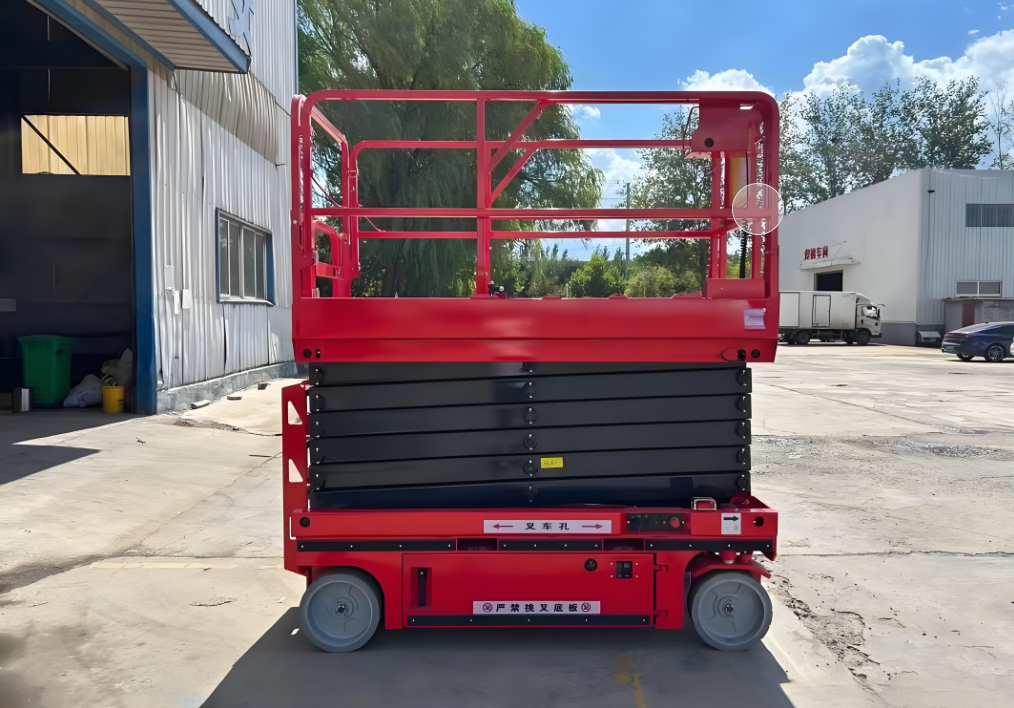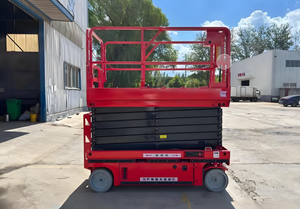
Detailed Explanation of Elevator Inspection Methods and Standards Inspection, Audit and Certification Services for Warehousing and Factory Inspection
Elevators and lifting operation platforms, as crucial equipment for high-altitude operations and logistics transportation, are widely used in fields such as construction, firefighting, warehousing, decoration, and industrial maintenance. Their quality and reliability directly affect the safety of workers and work efficiency. To ensure that the lifting equipment complies with design and safety standards, a systematic inspection and testing process must be implemented. This article will combine the key quality control points in factory inspection and testing, introduce in detail the classification, inspection standards, testing methods, and factory audit points of elevators, providing practical references for purchasers, quality inspectors, and engineering managers.
I. Main Categories and Application Scenarios of Elevators
Elevators can be classified into the following seven types based on their structure and usage methods. Each category has its specific application scenarios and inspection priorities:
Mobile Elevating Work Platform:
It has mobility and flexibility, typically featuring a scissor-type structure, and is suitable for high-altitude operations in various sites. During inspection, special attention should be paid to checking the walking system, braking performance, and the compliance of power sources (such as batteries, diesel engines).
Fixed elevator:
Installed at a specific location, used in assembly lines, warehouse platforms, etc. It requires verification of the foundation's adaptability, stability, and the functionality of attached devices (such as rollers, hoppers).
Wall-mounted elevator:
Suitable for spaces with limited space, such as basements or warehouse renovations. The key points of inspection include installation strength, transmission system (chain/steel wire rope), and safety protection.
Traction elevator:
Can be towed by a vehicle, with strong mobility. It is necessary to check the safety of the towing connection, the compactness of the structure, and the reliability of the power switching.
Self-propelled elevator:
It has its own walking and steering functions and does not require an external power supply. During the inspection, the walking control, battery endurance, and operational stability need to be tested.
Vehicle-mounted lift:
Installed on cars or battery-powered vehicles, it is suitable for mobile operations. The vehicle compatibility, hydraulic system and emergency descent device should be verified.
Extension-type elevator:
The work surface can be extended to expand the working range. It is necessary to check the synchronization, control accuracy and load stability of the extension mechanism.
II. Inspection Standards and Basis for Elevators
The inspection of elevators should follow national standards, industry norms, and customer technical documents. The main referenced standards include:
GB/T 10052 "Classification of Construction Hoists"
GB/T 10054 "Technical Specifications for Construction Hoists"
GB 10055 "Safety Rules for Construction Hoists"
GB/T 10056 "Test Methods for Construction Hoists"
ISO 9001 Quality Management System (Factory Audit Requirements)
CE certification, ANSI standards (exported products must meet the requirements of the target market)
III. Key Inspection Items for Factory Testing and Goods Inspection
1. Document and Label Verification
Verify the consistency of product nameplates, instructions, certificates of conformity, and packing lists;
Check whether the safety warning signs are complete and comply with the requirements of standard language.
The technical documents should include installation diagrams, electrical schematic diagrams and maintenance manuals.
2. Appearance quality and welding structure
Weld inspection: No cracks, slag inclusions, undercutting, etc. are present. Important welds (such as standard sections, hoist cage columns) must meet the size requirements;
Surface treatment: The paint is applied evenly without any missed areas. The castings have no sand holes or air pores.
Fastener inspection: The torque at key connection points has reached the standard and anti-loosening marks have been made.
3. Inspection of Transmission and Hydraulic Systems
Gear and rack meshing: Side clearance 0.2 - 0.5mm, contact length ≥ 40% of tooth height, tooth length ≥ 50%;
Steel wire rope and drum: The wire rope is neatly arranged and the fixation complies with the requirements of GB 10055;
Hydraulic system: No oil leakage, oil temperature rise ≤ 45K (after working test);
Static overload test: The cage did not descend under 125% of the rated load.
4. Electrical Safety Testing
Insulation Resistance Test: Motors and components ≥ 0.5 MΩ, Lines ≥ 1 MΩ;
Safety device verification: The limit switches, emergency stop buttons, and door interlock devices are functioning properly;
Ground continuity: Resistance value ≤ 0.1Ω.
5. Performance testing during operation
Idle operation: The entire lifting process is smooth without any abnormal noises;
Rated load operation: 1-hour continuous operation, motor temperature rise and noise meet standards;
Overload operation: The structure operated at 125% load for 3 times without any abnormalities.
6. Safety device testing (Key item)
Fall prevention safety device test: Braking distance 0.25 - 1.20m (Type SC). After the operation, the electrical interlock should cut off the power.
Buffer check: Installed correctly and functioning effectively;
Manual safety device (SS type): Operates smoothly and reliably.
7. Inspection of guide rail frame and standard sections
Randomly inspect 10% (no less than 5 sections), the misalignment of vertical pipe joints should be ≤ 0.8mm;
The pitch error at the rack connection is ≤ 0.6mm, and the gear difference is ≤ 0.3mm.
IV. Key Points of Factory Audit
During the factory audit process, in addition to product inspection, the quality management capabilities of the production enterprise also need to be evaluated:
Supply Chain Management:
Inspection records for raw materials (steel, hydraulic components, electrical components) upon entry into storage;
Supplier qualifications and compliance documents.
Production process control (IPQC):
Welding process qualification and welding qualification certificates;
Torque tightening points control and inspection records.
Testing equipment and calibration:
Torque wrenches, pressure gauges, insulation testers, etc. need to be calibrated regularly;
The test bench (such as the drop test bench) must meet the standard requirements.
Traceability system:
From raw materials to finished products, there should be unique identification and traceability records.
Compliance and Certification:
The product must obtain the necessary certifications (such as CE, ISO) and comply with local regulations.
V. Common Defects and Judgement Criteria
Defect Category Concrete Manifestation Judgement Criteria
Critical Defect Failure of fall prevention safety device, structural cracks, unqualified insulation One-vote rejection, batch rejection of non-compliance
Major Defect Welding defects, oil leakage, malfunction of safety switch Batch inspection with AQL = 1.0
Minor Defect Bad paint finish, incorrect labels, non-standard packaging Batch inspection with AQL = 2.5
Inspection at Factory: Any non-compliance with important clauses (such as safety devices, overload tests) will result in batch rejection.
Type inspection: If any of the performance tests (stability test, drop test) or reliability tests are不合格, the acceptance will be terminated.
VI. Conclusion
As a high-risk special equipment, the quality verification of elevators must strictly follow national standards and acceptance procedures. Through systematic factory inspections, performance tests, and factory audits, the risks of the products can be effectively controlled, and operational safety can be guaranteed. It is recommended that purchasers and quality inspection institutions pay special attention to structural safety, transmission performance, and protective devices during the inspection process, and rely on professional tools and standard methods to conduct tests to ensure that the equipment meets the design and application requirements.
Share this product

Detailed Explanation of Elevator Inspection Methods and Standards Insp
The elevator, as a crucial piece of equipment for high-altitude operations, is used in fields such as construction, firefighting and industrial maintenance.
